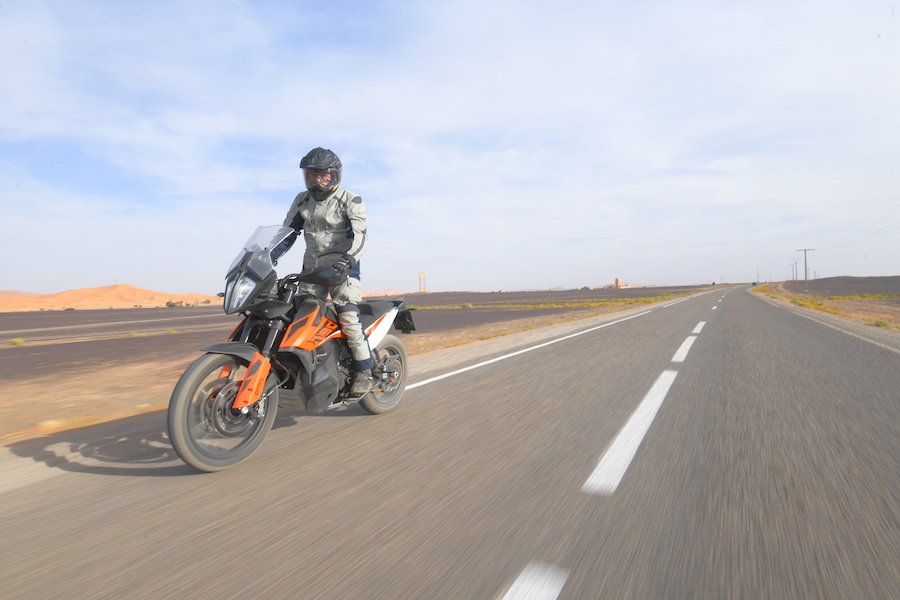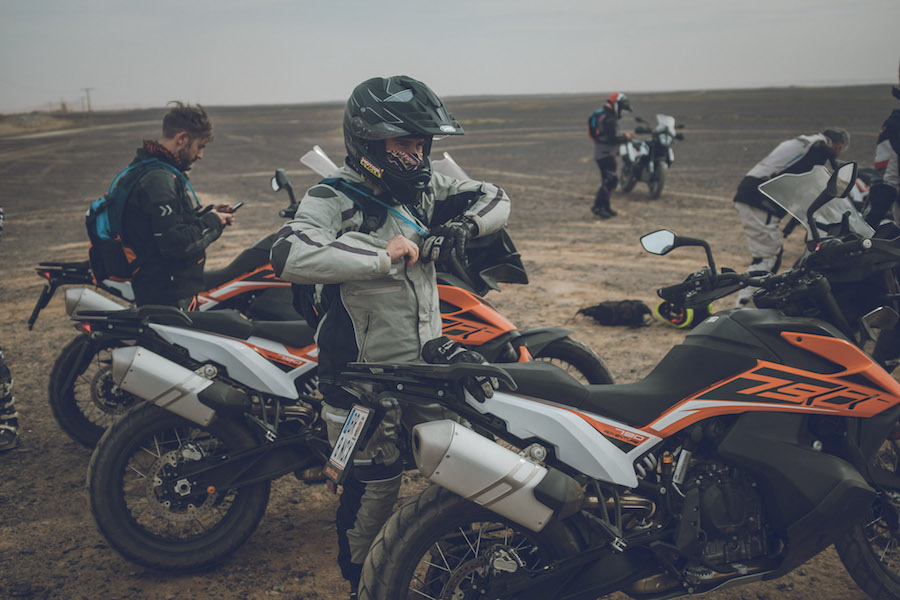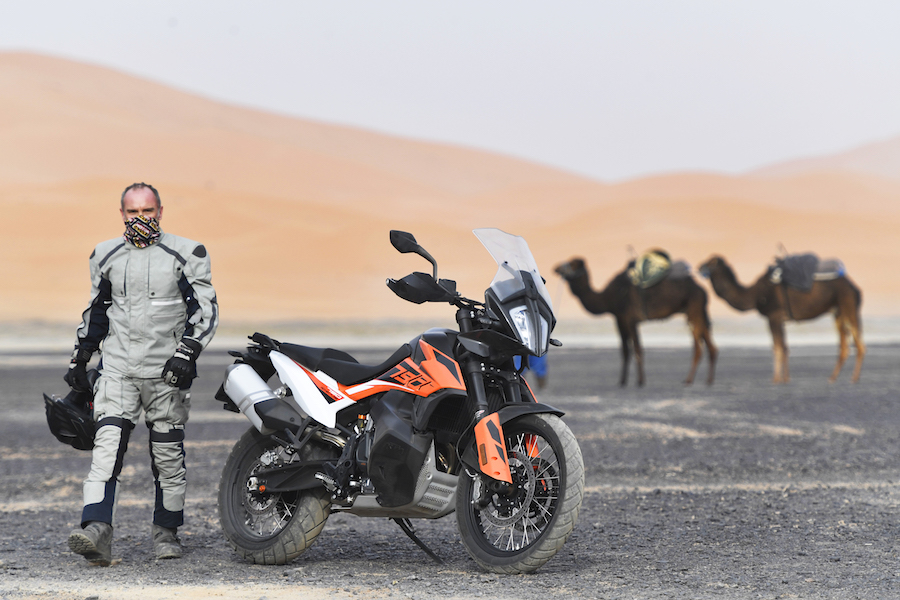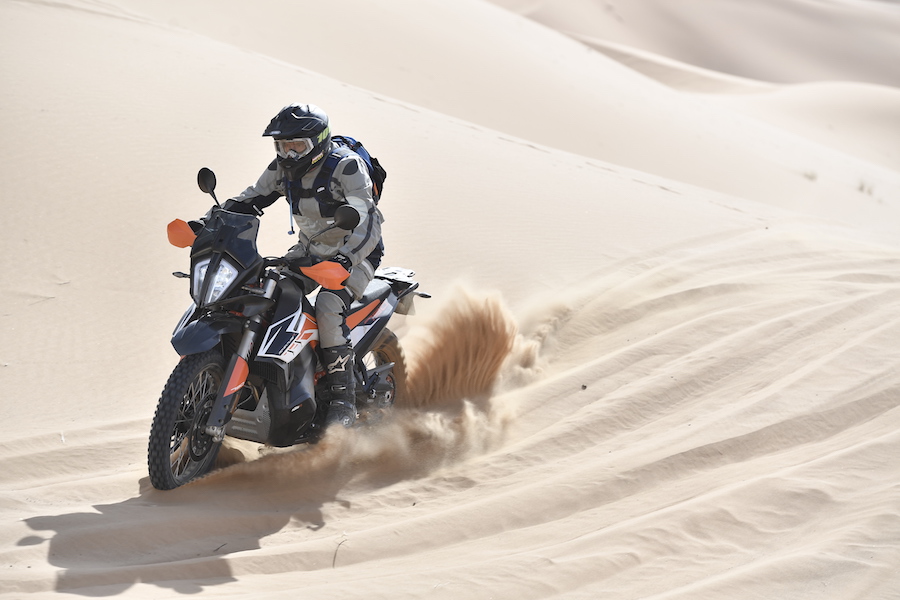We head to the far east of Morocco, where KTM’s dominant Dakar squad train no less, to ride the firm’s all-new mid-capacity adventure bike
I don’t wish to sound like I’m blowing orange dust up the collective quoit of the Mattighofen Massive, but, I do <i>love<i> its shit. I love what it makes, how it makes it, and the way it makes no apologies for making it. No other major manufacturer asserts its difference with such deferential fervour, and whenever a new Kato is waiting in the wings ready to quench the thrills of a hyperactive Red Bull generation, you can always rely on it being a bike with something in spades; spunk, with an emphasis on the punk.
Any relatively young upstart company which delights in repeatedly destroying HRC’s Dakar dream can only be admired; young punks who know the flow better than anyone when it comes to dallying in the dirt. And you can bet all their rally-winning ways were built into the 790 Adventure R, together with a toothy wedge of sand-encrusted smugness. Race on Sunday to Saturday, repeat for another week, sell on Monday. It’s the KTM way.

The middle ground of the adventure market has the hottest property right now, with brand-new metal from KTM, BMW, Triumph and Yamaha in the line-up of adventurers with enhanced off-road ability. This is great news for ride-far-and-wide freaks, because at last we are seeing a flood of bikes to occupy the space between too-big-for-the-bush 1200s, and the trusty but tired old big-bore singles; the underdeveloped mainstay of many true blue bush adventurers for decades. With both Suzuki’s venerable DR650 and Kawasaki’s KLR650 in the top 10 for overall sales in Oz in 2018, there’s certainly still a thirst for the low-tech, low-cost option, and there’s no doubt that big-capacity adventure bikes remain a big draw for both blacktop tourers and the more adventurous.
790 Adventure
But, flagman my words, things are about to change, and mid-capacity multis are where it’s at.
Europeans are accustomed to big adventure bikes being by far the most common motorcycle on the motorways. But here in Australia, I do wonder what percentage of them are on their way down to the Olde Bull and Bush, as opposed to on their way to tackle bulldust in the bush. Thankfully, KTM accommodate both choices.
The standard 790 Adventure model is targeting the adventure traveller with less experience, shorter legs, or just less off-road riding on their agenda. The R-model, on the other hand, just wants to be the most off-road capable adventure bike on the market.
If you want your off-roading to be powered by more than one piston, then you must be prepared to muscle around over 200kg of bike and fuel. The KTM 790 Adventure may be very light for its class, but it’s still far from being a lightweight. What it is, however, is a smartweight, proving it’s not what you’re packing but where you pack it that counts.
Carrying its fuel load low, and also holding its dry centre of mass low, gives the 790 Adventure’s chassis an important edge over other bikes of similar weight. Add to this a solid suspension platform which reduces pitch to a bare minimum, and you have what amounts to a new strategy for dealing with the inevitable weight penalty of a twin-cylinder dirtbike. You still have to carry all that weight, but in the KTM’s case you spend less time fighting against it, particularly when the going gets tight and technical.
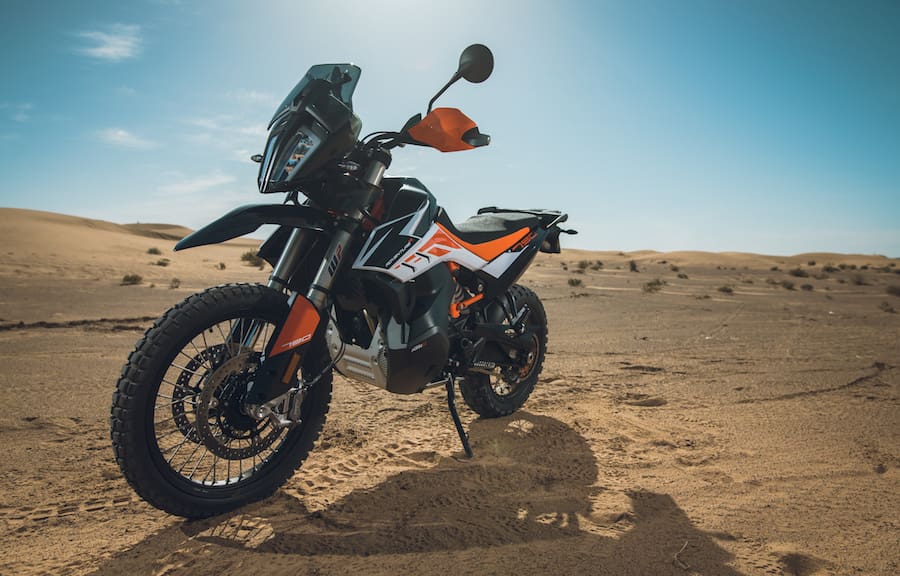
The other unicorn in the hard-core off-road playground is a low seat height. For bigger terrain you need longer suspension, but you can’t design a chassis with less under-engine clearance than you’ve got suspension travel, otherwise you’ll find your bike either beached or broken, or both. So given that ground clearance is set by your suspension travel, seat height is primarily determined by the height of the engine. KTM’s 790 parallel twin has been designed to be ultra compact with these diametrical equations in mind. The holy trinity of adventure bike design would be to have excellent ground clearance, peerless suspension performance, and universally accessible seat height. The KTM comes pretty close.
The Adventure R’s 240mm of suspension travel already gives it a distinct advantage over the other bikes in its class, but it’s how intelligently each millimetre of stroke is rationed out by the WP Xplor 48mm fork and PDS shock which really makes the R stand out. A rock steady platform of progressive low-to-medium speed damping keeps the bike propped up high in its stroke, tenaciously resisting any sudden pitch or diving motion. This leaves the lion’s share of suspension stroke held in reserve for when it’s really needed. Then, when shit gets ugly, the high-speed damping circuit catches it just before hitting the proverbial fan. And the final act to this masterful performance, is utterly bullish bottom-out control. Even airtime or the nastiest square-edged hits laying hidden in the desert dust couldn’t provoke the usual telling metallic thunk of violently reaching full-bump. This truly is the new benchmark for big-bike, big-country suspension.
The 790 Adventure boasts a lower seat height than the R model largely due to having 40mm less suspension travel, but its WP Apex suspension is also lower spec. Although its tarmac and gravel-road performance is still excellent, the difference in spec is something to ponder when making the choice between models, as the R’s extreme off-road performance advantage is significant.
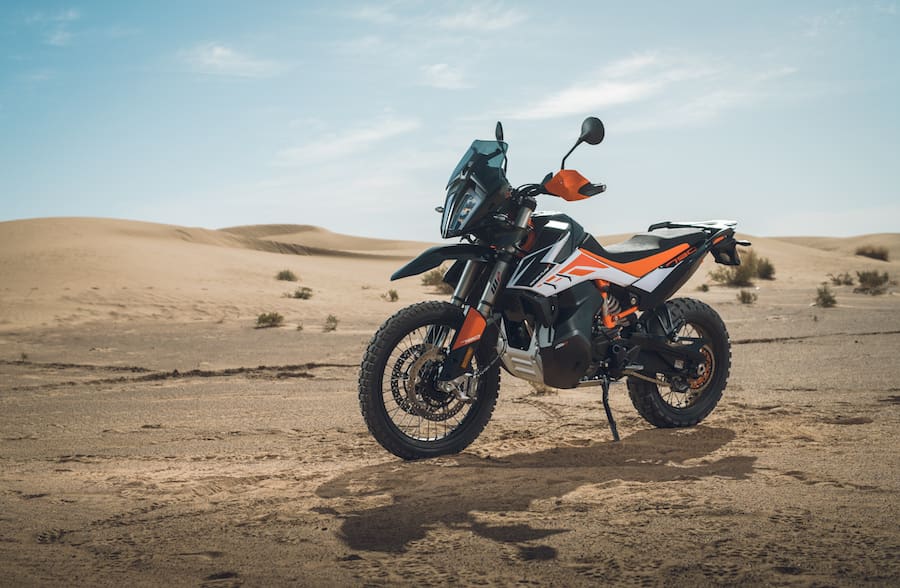
If tarmac is your touring mainstay, then the short-travel 790 is well worth a look. On-road handling is sweetly balanced, and remarkably steers better than most adventure-style bikes fitted with a 19-inch front wheel. There’s no steering flop or twitchiness often associated with 21-inch wheeled machines.
The flat, wide and firm seat on the 790 Adventure is very much a tick in the touring box. However, this means the seat height figures can’t be taken totally at face value, as the width makes the straddle length relatively long. My 31-inch inseam needed the lower of the two standard height options to get both feet firmly to ground.
I only had the opportunity to try the screen on its lowest setting, but would expect the highest position to be best for highway use. In still air and riding directly into or away from the wind it did a reasonable job of sheltering around 172 of my 173 centimetre frame, so the extra 40mm height to fully hoisted should easily do the trick. However, tool-free adjustment would be preferable.
Although the two 790 variants come fitted with different screens and seats as standard, those parts are all interchangeable between models.
Range anxiety is a mental strain no adventurer needs, so what they do need is a whopping great bag of benzine between their knees. Or in the KTM 790’s case, between your knees and toes. The 20-litre rally-style tank which envelops the engine right down to sump level is claimed to get you up to 450km of smart-casual highway cruising according to KTM’s adventure travel ambassador Joe Pichler, who’d ridden one 19,000km through Africa to be at the launch. I saw dashboard readings of 5.6L/100km at the end of both the tarmac and off-road riding days, on which the riding was neither smart, nor casual. It was a brave move to effectively wrap the fuel tank around the motor, given the placement could be misinterpreted as overly vulnerable. But, by being brave, KTM has progressed adventure bikes to a modestly higher level, which is no faint praise, since quantum leaps in motorcycle design are as rare as dugong dung in the desert.

A modern adventure bike just isn’t complete without a bewildering array of electrobooty. Thankfully, perhaps by design, perhaps through exposure, rider aids do seem to be becoming less bewildering. In the 790 Adventure’s case, I found the matrix of menus to be completely loser-friendly, even for a travel weary, flu-riddled and totally flummoxed fellow with five thumbs and a magazine deadline heavy on mind’s doorstep. Except, that is,…for the diddly, fiddly digits on the dash, which are way too small for longsighted fifty-somethings. I wouldn’t mind, if real estate on the fancy pants TFT screen were at Sydney bayside premiums, but there is acres of room for bigger font. I feel that KTM is doing the whole, otherwise excellent, electronics package a disservice here. For a system which is so easy and genuinely useful to adjust on-the-fly between trail conditions when riding off-road, you really don’t want to be squinting at the screen when you should be focusing on avoiding that tree.
In practice, the riding modes perform faultlessly, and there is an easily digestible choice of three distinct characters; Street, Off-Road and Rally. There are nanna levels of mollycoddling in Street mode, providing ideal brain-still-at-breakfast safety margins for early morning commutes or long lazy days on the highway. The dust-covered tarmac streets of eastern Morocco, with many a mobile meat-chicane laying in wait, are the perfect imperfect-road to test safety smart technology. Like an ancient cryptic colonial warning from the Treaty of Fez, the roads are packed with German rust buckets, pocked as a second rate Spanish matador and as slippery as French-polished snot, even sketchier than the off-road riding in parts. The 790’s default Street settings for ABS, traction, engine slip, and throttle progression were all on the soft side, but appropriately smooth in delivery and definitely on the right side of caution.
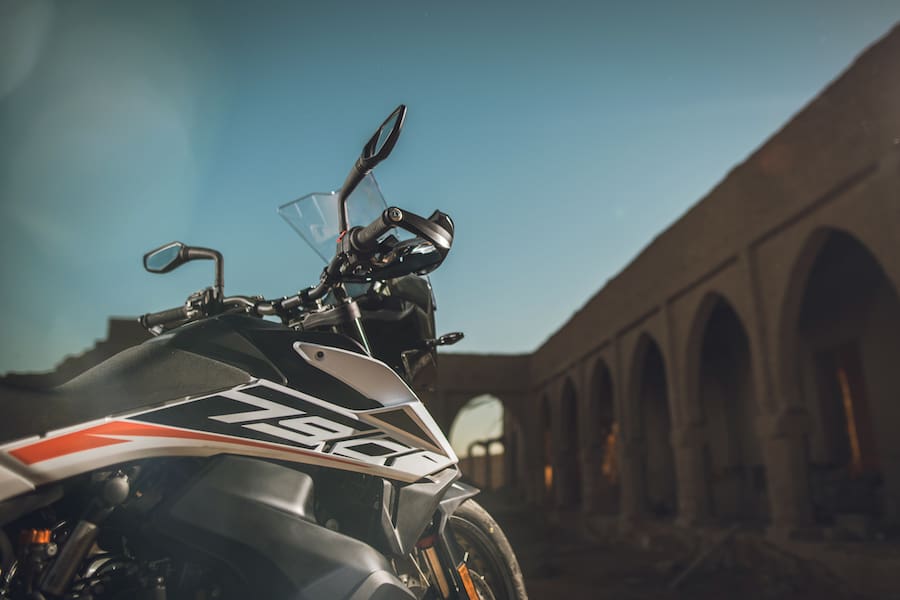
Off-road mode, on the other hand, is a sizeable leap of faith in rider confidence from Street mode. It allows enough off-road appropriate personal expression (skidz’n’shit) to keep most experienced gravel travellers entertained, yet is still suitably respectful for off-road newbies.
Rally mode is were I spent most of the ride, as it lets you choose your own combination of settings, including being able to dial in the desired level of traction control for the conditions on-the-fly via buttons on the left-hand switch block. You can even switch off the MTC and ABS without stopping, although you do have to shut the throttle for a couple of seconds after making the menu selection. Three throttle response options are available, also named Street, Off-Road and Rally. The latter option is sharp to the point of being pointless. Even our group leader, Kiwi rally god Chris Birch, agreed that the Off-Road throttle response setting was more appropriate for for the dirt.
The only situation I felt the need to abandon traction control altogether was in the deep sand of the high dunes. Here, the best form of traction control was to lean back, snick it up a gear, and use the 790’s broad bottom-end to hunt for grip. Surfing the high dunes of the Sahara was the highlight of the ride, and the 790 Adventure R made it far easier than I was expecting.
The optional feature of Quickshifter+ fitted to all the test bikes works for both up and down shifts, and is designed to work in harmony with KTM’s MTC traction control. A combination of ignition retardation and fuel cut is used, as doing it the old fashion way with a simple ignition cut is unacceptable nowadays due to emissions rules. The system works well once the gear lever position is set correctly for the rider. It has to be said that a rider specific gear lever position is essential for any manual bike, whether fitted with a quick shifter or not. In certain off-road situations the 790’s quickshifter struggled to shift cleanly when confronted by excessive wheel spin, but this isn’t a problem with KTM’s system specifically, and is precisely why you don’t see quickshifters widely used in off-road racing.
Cruise control was only installed on the 790 Adventure test bikes for our road ride, but is available as an upgrade on both models. Awkward cruise control controls are one of my pet hates, and although located on the logically correct left handlebar, the position of the switch required releasing my grip. Heated grips are an option on both models, but the hand guards, rear rack and pillion hand rails are all standard equipment and fittingly robust.
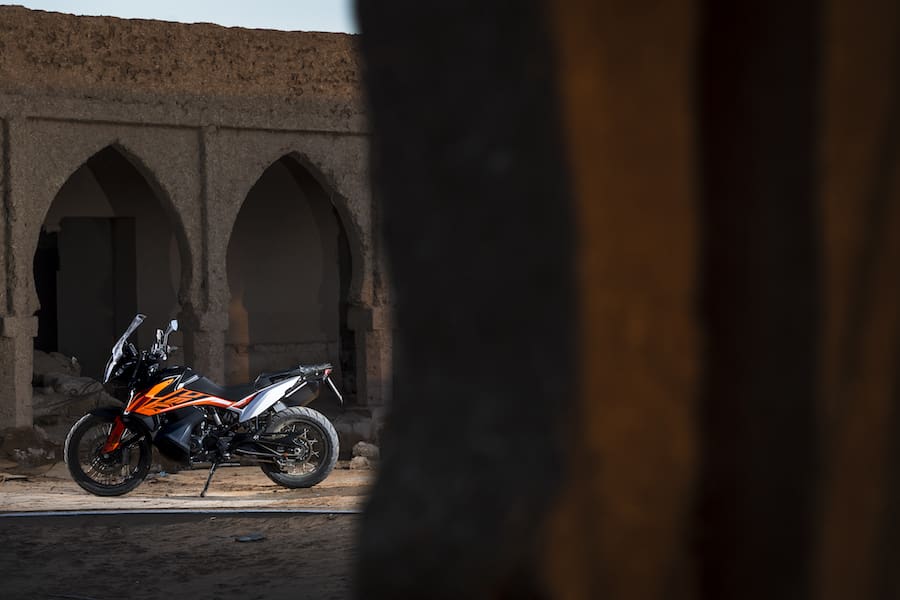
So, how does it crash? Very well, from what I have witnessed. Let’s just say that some of the world’s motorcycle media tasted a whole happy meal load of duneburger in the course of capitulating with the photographers. Any doubts as to the sense or structural integrity of that low-slung fuel tank were dispelled in a veritable ballet of lowsides, highsides and all manner of bingles besides, both in the sand and on the rocks. But, that’s just what happens when journos get thrown into the dunes on bikes they don’t own.
On the subject of structural integrity, no stone has been left unsmashed in KTM’s pursuit of genuinely extreme off-road chassis durability. Can you imagine hitting a high kerb at over 100 km/h, deliberately, repeatedly? Neither can KTM’s 790 development engineers, which is why they couldn’t quite believe they can find test riders crazy enough to do it. We are talking of impacts hard enough to bend forks and yokes, and to record peak forces of 50-70 g. Logging every stress point with strain gauges during each test is critical, as is remembering to press the data logger’s ‘on’ button, because they “don’t like to ask the rider to perform this too many times”. And yes, sometimes it does all go terribly wrong. But what this achieves is an understanding of the most extreme loads encountered in off-road riding, and exactly where more heft needs to be added to the chassis and engine. Using the engine as a fully stressed member was a major contributor to the 790’s low weight, but they needed to do their homework to get the package to hang together through hell and high water.
Speaking of high water, folk heading north in the wet season will be glad to hear that the air intake is located high and to the rear of the bike, under the pillion seat. Access to the air filter and battery has been made as easy as lifting the seat off. A great feature for servicing and roadside repairs.
Storage has been well thought out, too, with a secure phone-sized pocket under the pillion seat, along with a 12v power point to keep you charged. Hiding behind each side cover is another larger stash pouch big enough for a useful collection of tools, spares or contraband. Cleverly, no tools (or contraband) are required to remove the side covers or seat.
I got the impression that KTM has a lot riding on the success of the 790 Adventure models, and is nervously optimistic that it has nailed the right mix of price and performance. It’s entering a tough market, which is only going to get tougher. But I reckon they’ve got good reason for optimism, because they’ve baked two tough cookies.

BMW F 850 GS Adventure
Arguably the KTM’s closest competition in terms of price, specification and performance, the GS Adventure’s top features include a 23 litre fuel capacity, heated grips and cruise control as standard, and a three-year warranty. Fully fuelled weight for this 853cc parallel twin is 244kg, with 230mm/210mm suspension travel front and rear, and a claimed power figure of 76kW with 86Nm of torque. Standard seat height is 875mm, although the GS can be specced with anything from 815mm with a suspension lowering kit, up to 890mm with the optional Rallye seat. Pricing starts at $21,280 ride away.

Triumph Tiger 800 XCa
Triumph’s middleweight adventurer is powered by a high revving 800cc inline three-cylinder engine with 70kW of poke and 79Nm of punch. It rides on WP suspension providing 220mm travel at the front and 215mm at the rear. A full suite of electronic rider aids features six riding modes, plus you get heated seats and grips as standard. With its 19 litre tank fully brimmed the Trumpy tips the scales at 222kg, and the seat height is adjustable from 840 to 860mm. This premium spec XCa will set you back $19,950 plus on-roads, but the base model XC starts at $15,590.
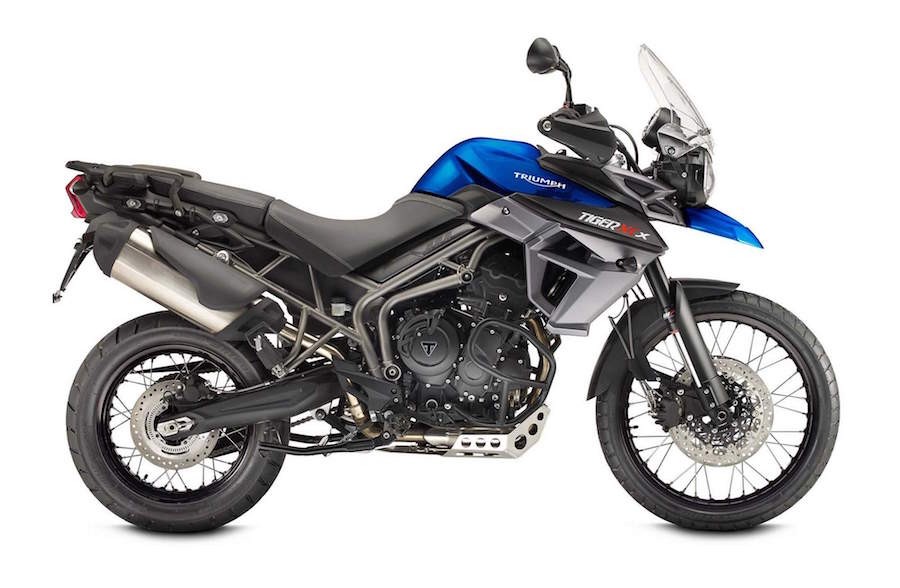
Yamaha Tenere 700
Not due on our shores until December 2019, full details are yet to surface. What we do know is that Yamaha are serious about reviving the Tenere brand, and the long awaited 689cc parallel-twin will hit the market at a competitive $15,499. Spec wise, the steel duplex cradle frame features an aluminium swingarm with 200mm of travel at the rear, and 43mm forks providing 210mm travel at the front. Fuel capacity is 16 litres, and seat height is said to be a rangy 880mm. Some preproduction units are due to arrive in Australia in June, and will be shown at selected events through 2019.
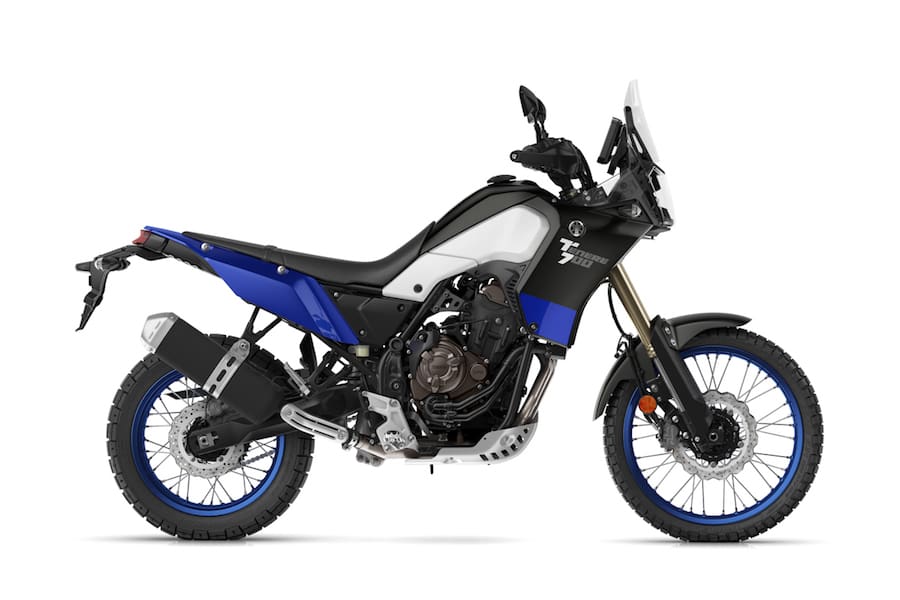
Test Paul Young Photography KTM
